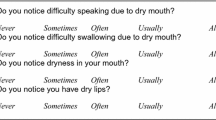Summary
Gas-chromatographic odor-assay techniques have been used to study vaginal odors. An improved version of this technique was applied to compare the efficacy of a suppository containing phenylmercuric acetate, a feminine douche preparation, and a conventional vinegar douche in reducing the concentrations of malodorants in the vaginal vapors of ten normal women.
Seven malodorants occurred frequently in vaginal vapors; seven more were noted less frequently, and additional ones occurred occasionally. A reduction in the malodorant concentrations was observed with all treatments, but this effect reached acceptable statistical probability levels,p<0.05 (95% confidence levels), consistently only for the suppository.
The effect of the phenylmercuric acetate suppository on the concentration of vaginal malodorants was statistically valid at 2, 6, and 10 hours after its use. In the case of the douche preparation, the degree of reduction in the malodorant concentrations did not reach statistical significance. A Sign Test, however, on the frequency of the malodorant concentration decreases as compared with the frequency of malodorant concentration increases indicated statistical significance for the decreases at 6 and 10 hours after the use of the douche preparation. The total number of malodorants per sample likewise tended to decrease with the various treatments, but this effect reached statistical significance only for the suppository 6 and 10 hours after the treatment.
Similar content being viewed by others
References
Cohen, L.: Influence ofpH on vaginal discharges. Brit. J. vener. Dis.45, 241–246 (1969).
Coleman, G. H., Weed, L. A., Myers, C. D.: Bacterial properties of certain organomercuric acetates. J. Amer. chem. Soc.59, 2703–2704 (1937).
Dravnieks, A.: Theories of olfaction. In: Chemistry and physiology of flavor, H. W. Schultz, E. A. Day, and L. M. Libby (eds.), p. 95–118. Westport, Conn.: Avi Publishing Co.
Dravnieks, A.: Olfaction. In: Medial engineering. Chicago: Yearbook Medical Publishers, Inc. In press.
Dravnieks, A.: Odors as signatures. New Scientist31, 622 (1966).
Dravnieks, A., Bock, F. C., Whitfield, Joyce: Contribution of molecular properties of odorants to the hedonic value of their odors. VII Mediteranean Symposium on Odors, May, 1972, Cannes, France.
Dravnieks, A., Keith, L., Krotoszynksi, B. K., Shah, J.: Vaginal odors: A gaschromatographic odor assay technique applied to the evaluation of an antiseptic in vivo. J. pharm. Sci., submitted.
Dravnieks, A., Krotoszynksi, B. K.: Systematization of analytical and odor data on odorous air. In: Odors and odorants: The engineering view, (Ashrae, ed.), p. 3648. New York 1970.
Dravnieks, A., Krotoszynski, B. K., Casely, R. E., Tabor, D.: Gas chromatographic evaluation of intensity of auxillary odors. Toilet Goods Assn. Cosmetic J.1, 14–20 (1969).
Dravnieks, A., Krotoszynski, B. K., Keith, L. G., Bush, I.: Odor treshold and gas-chromatographic assays of vaginal odors: Changes with nitrofurazone treatment. J. pharm. Sci.59, 495–501 (1970).
Dravnieks, A., Krotoszynski, B. K., Leib, W. E., Jungermann, E.: Influence of a antibacterial soap on various effluents from axillae. J. Cosmetic Chem.19, 611–626 (1969).
Dravnieks, A., Krotoszynski, B. K., Whitfield, J., O'Donell, A., Burgwald, T.: High-speed collection of organic vapors from atmosphere. Environmental Sci. Tech.2, 1220–1222 (1971).
Dravnieks, A., O'Donnell, A.: Principles and some techniques of high-resolution headspace analysis. J. Agr. Food Chem.19, 1049–1056 (1971).
Edmunds, P. N.: The biochemical, serological and haemagglutinating reactions ofHaemophilus vaginalis. J. Path. Bact.83, 411–422 (1962).
England, D., Bartizal, F., Keith, L., Fields, C., Brown, E. R.: The presence of corynebacterium, lactobacillus, trichomonas species, and yeast in the external os of pregnant women. Chicago Med. Sch. Quart.31, 5–8 (1972).
Fuller, G. H., Steltencamp, R., Tisserand, G. A.: The gas-chromatograph with human sensor: Perfumer model. Ann. N. Y. Acad. Sci.116, 711–724 (1964).
Keith, L., Bush, I. M., Dravnieks, A., Krotoszynski, B. K.: Changes in vaginal odors of six patients under nitrofurazone treatment. J. Reprod. Med.4, 141–148 (1970).
Keith, L., Dravnieks, A., Krotoszynski, B. K.: Vaginal odor chromatographic assays; changes caused by douche or suppository-preliminary data. Chicago Med. Sch. Quart.30, 1–11 (1970).
Keith, L., England, D., Bartizal, F., Brown, E. R., Fields, C.: Microbial flora of the external os of the premenopausal cervix. Brit. J. vener. Dis.48, 51–56 (1972).
Kendall, D. A., Neilson, A. J.: Correlation of subjective and objective odor responses. Ann. N. Y. Acad. Sci.116, 567–575 (1964).
Kurochkin, B. I.: Antimicrobial properties of cervical mucus of pregnant women. Antibiotiki Moskva.14, 929–932 (1969).
Lang, W. R.: Vaginal acidity andpH: A review. Obstet. gynec. Surv.10, 546–560 (1955).
Langley, R.: Practical statistics, p. 190. New York: Dover Publications Inc. 1971.
Kovats, E. S. Z.: Chromatographic characterization of organic substances in the retention index system. Advances Gas Chrom.1, 229–247 (1965).
Savage, D. C.: Microbial interference between indigenous yeast andLactobacillus in the rodent stomach. J. Bact.98, 1278–1283 (1969).
Singh, E. J., Swartwout, J.: Human cervical mucous lipids. J. Reprod. Med.8, 35–40 (1972).
Stevens, S. S.: On the psychophysical law. Psychol. Rev.54, 153–181 (1957).
Stevens, S. S.: Psychophysics of sensory function. In: Sensory communication (Rosenblith, ed.)m p. 1–33. Cambridge, Mass.: M. I. T. Press 1961.
Woodbine, M.: The comparative antibacterial activity of O-chloromercuriphenol and phenylmercuric acetate. J. Pharm. Pharmacol.2, 376–381 (1950).
Author information
Authors and Affiliations
Additional information
Supported in part by the Norwich Pharmacal Company, New York.
Rights and permissions
About this article
Cite this article
Keith, L., Dravnieks, A., Krotoszynski, B.K. et al. A comparison of the effect of a suppository and two douches on vaginal malodorants. Arch. Gynak. 215, 245–262 (1973). https://doi.org/10.1007/BF00672809
Received:
Issue Date:
DOI: https://doi.org/10.1007/BF00672809




